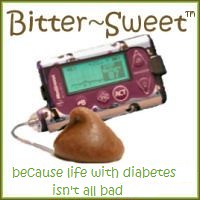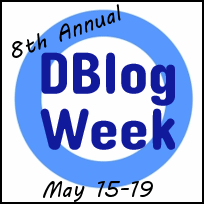
One of the reasons I’m excited about working with Early Alert Canines (EAC) is we train and place DADs with families with young diabetic children. We call those dogs “Skilled Companions”. I wish every family with a diabetic child could have a DAD. Looking back on my own childhood, I wish I had had a blood sugar alert dog. The dog would have been able to express what I, as an infant and child, could not. The dog could have affirmed to my parents that my blood sugar was dropping, and that I was not cranky from teething pains, growth spurts, adolescence, etc. And even though kids might get angry with their parents, a gentle nuzzle from a dog is usually returned in kind.
As a nurse, and a person born with diabetes, I can only imagine what a dog could do for a parent’s peace of mind. The dog would be another set of eyes and ears (and nose) to monitor the young child’s (or children’s) BS levels and alert the child’s parent when appropriate. The DAD can help shoulder some of the parent’s responsibilities, while, hopefully, allying some of their fears. One mother who just graduated from EAC with her son and their dog tearfully exclaimed, “Thank you! I don’t feel so alone!” Here is another story that shows why I’m passionate about DADs being placed in families with diabetic children: I know of a dog that has been placed in a home with three diabetic children under age 6. The dog sleeps in the hallway between the children’s bedrooms, and alerts the mom when one of the kid’s blood sugar begins dropping rapidly, bringing her to the appropriate child.

I apologize for getting on my soapbox! I wish I could tell you all the ways Rainie has changed my life and my relationship to my own diabetes. She is my friend and constant companion, as well as being my perpetual blood sugar alert system. She has truly saved my life at night and during one particular walk on the beach. There are so many stories to tell – and Rainie and I have only been together for a little over two years.
I’d like to make myself available to anyone who has questions about life with a diabetic alert dog! Please feel free to read my blog or contact me at RainieAndMe.wordpress.com or email me at: HilarythePotter@gmail.com.
And, for those individuals interested in reading a blog about having a diabetic alert dog while in college, please read my friend Amelia’s blog http://www.doggoestocollege.com.
And one last story: Not long after Halloween, I was walking my dog when a little boy named Jason came running with his cape flying behind him as he swung his light-saber from side to side. He was yelling, “Hey! Is that a Ewok?” I laughed and introduced him to my golden retriever named Rainie. He wanted to know why she had a red jacket on. As I explained to Jason and his mom that Rainie is a diabetic alert dog and that she notifies me when my blood sugar is dropping rapidly, his mom began to cry — Jason had just been released from the hospital after being found unconscious due to low blood sugar. As we were talking, Jason looked up at me, with his arms around Rainie’s neck, and said, “If I had a dog like Rainie, she would keep me safe – just like my light-saber.”
Thank you so much, Hilary, for giving us your insights on life with a DAD! Please be sure to visit Hilary at Rainie And Me to hear more about life with Rainie and to see the beautiful pottery Hilary created for a recent Early Alert Canines fundraiser. You can also check out more about EAC on their Facebook page.





There's another important group that hasn't been noted here: senior citizens, especially those who whose health is sufficient to live independently but may be widowed and are now living alone. These animals can really make a difference between living life as a feeble old person and virtual independence.
ReplyDeleteDear Scott,
DeleteThank you for catching my omission. Early Alert Canines trains dogs for diabetics of any age. Seniors who are physically able, tend to be placed with full-access service dogs. If one is more comfortable with only in-home alerting, for whatever reason, a Skilled Companion may be more appropriate.
Diabetic Alert Dogs may bean appropriate choice for any diabetic who (for example) is living alone, is a senior, is a young child, has low blood sugar unawareness, is a college student, etc.
Hilary is my friend, I love her dearly and what Rainie does is amazing. More from Hilary!
ReplyDeleteJason & Eli (Eli is my D.A.D)
What a great story! I just signed up to follow your blog. I'm very interested in this field and am currently training my dog as a DAD. I would like to learn enough to train more dogs eventually. As you have shown so well, they can make such a difference in a person's life. Both physically and emotionally.
ReplyDeleteI'm also interested in this research that is attempting to identify exactly what it is that the dogs are detecting. It would be a nice addition to the training to know that the scent that you are training with is reliable.
http://www.prnewswire.com/news-releases/lilly-supports-research-to-determine-what-a-dogs-nose-knows-about-people-with-diabetes-and-severe-hypoglycemia-164252006.html